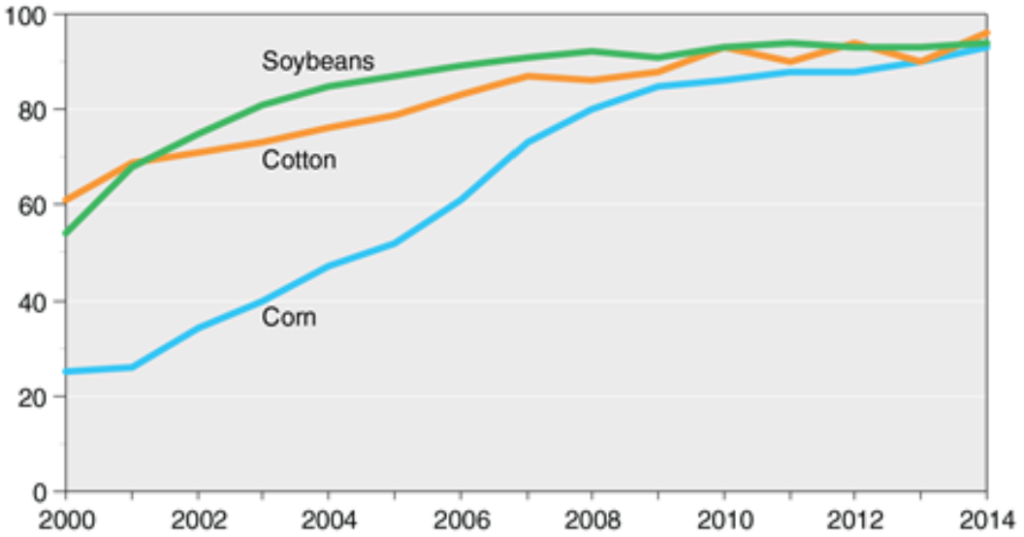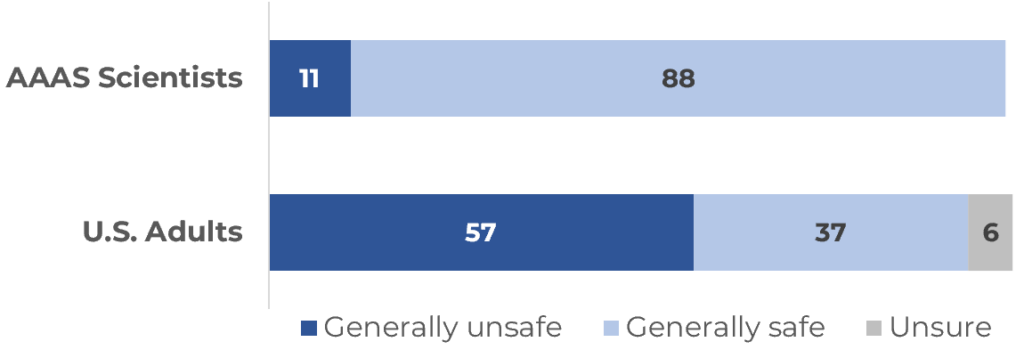Europe May Stop Saying “No” to GMOs

Europeans may start noticing changes to their agricultural landscape as the EU decides whether or not to loosen regulations on genetically modified organisms (GMOs), showing a shift in sentiment and maybe even catching some feelings.
Background: GMOs include any plant, animal, or microorganism that contains DNA from another organism that gives it a desired trait, accomplished through a process called genetic engineering.
The first approvals of modified foods for human consumption came in the 1990s. Currently, only a few GMOs are allowed in the EU, due to significant opposition from when they were first introduced.
Adoption of genetically engineered crops in the United States, 2000-2014
percent of planted acres

Over 90 percent of corn, soybeans, and cotton grown in the United States are GMO. These crops have been modified to tolerate herbicides and resist pests.
- Gen Z’s extra low-rise jeans are likely not organic.
The majority of GMO products are used for animal feed, but many processed foods such as white sugar, cornstarch, corn syrup, and various oils also come from genetically modified crops.
Genetically modified crops around the world, 2010
hectares

In the EU, regulations have significantly reduced the adoption of the Franken-crops.
- This contrasts with the United States and South American countries like Argentina and Brazil, where they have been adopted faster than Californians adopted fermented kimchi.
Sustainability: A major use of genetic engineering is to modify plants to maintain crop yields and withstand drought, wind, rain, and more. Supporters believe GMOs are critical as concerns of food security grow in a world impacted by climate change.
- Brazil recently approved a drought-resistant wheat while scientists are developing a rice crop that can be resistant to sea water if sea levels rise.
Some scientists are also using genetic engineering for carbon capture. Living Carbon is a startup that developed poplar trees that can grow taller and faster, with hopes they can absorb 27 percent more carbon than a standard poplar tree.
Concerned citizens: There is no shortage of people who feel uneasy about GMOs. Greenpeace and other environmental organizations are opposed to their use due to concerns around the unknown impacts of genetically modified food on the natural world and on humans. The influence of large agriculture corporations doesn’t help, either.
These groups argue that natural methods such as regenerative agriculture could be used instead of genetic engineering.
Survey of different groups on eating genetically modified foods, 2014

When surveyed, most Americans generally feel unsafe about genetically modified foods. But in the same survey conducted by Pew Research, the vast majority of scientists from the American Association for the Advancement of Science (AAAS) believe that GMO food are generally safe.
- Even so, 67 percent of Americans don’t believe that scientists have a clear understanding of the health effects of genetically modified crops.
Zoom out: GMOs are part of the larger debate on how much humans should be trying to control their environment. Human activities have resulted in global warming, raising valid concerns about the human impact on the Earth.
At the same time, human creativity and innovation has led to boosted crop yields and significantly increased standards of living across the world.
Bottom line: There isn’t an easy answer to what the right path is for our food system, but hopefully it’ll at least be tasty.




